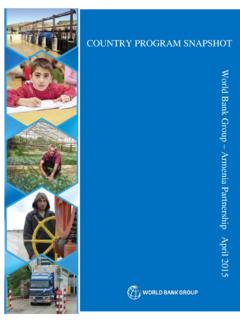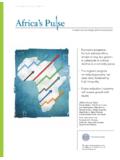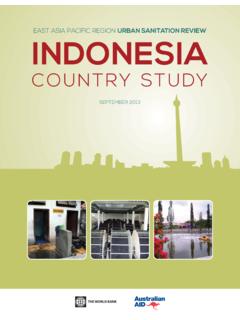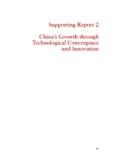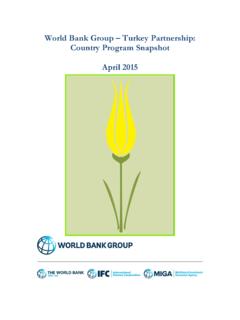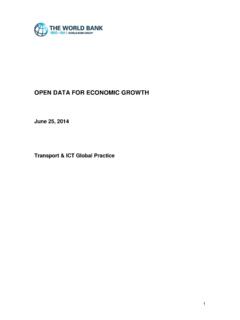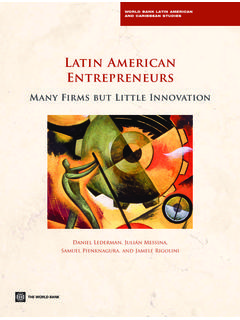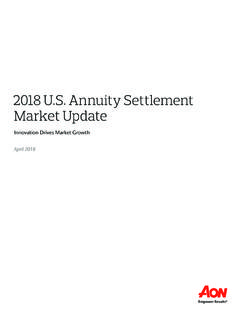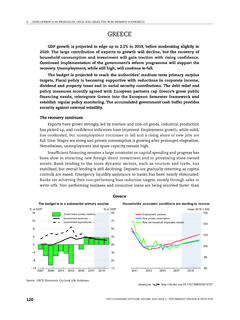Transcription of Pension Fund Management at the World Bank
1 Pension fund Management at the World bank Financial Advisory and Banking World bank Treasury Washington, DC Sudhir Rajkumar Head of Pension Advisory email: Tel: (202) 473-0799 2 Road Map Background on World bank Treasury Overview of World bank Pension fund Pension fund Investment Framework Governance Structure Investment Policy Investment Management Risk Management Performance Measurement Accounting & Reporting Information Technology 3 World bank Treasury Activities US$120-140 billion of investment Management 85% managed internally 15% managed externally Full spectrum of assets, from fixed income (bonds) to private equity Includes US$20 billion of Pension Plan Assets US$20-40 billion borrowings per year Frequent international issuer with hundreds of transactions per year Wide variety of products with different maturities, currencies, and structures US$25-50 billion derivative operations per year Variety of derivative products for risk Management 4 Established in 1948 Current fund size: USD 20 billion Membership.
2 15000 active staff, 9000 retirees Well-funded plan, with assets close to liabilities Investments in a wide range of asset classes including equities, bonds, real estate, hedge funds and private equity Investment activities overseen by Pension Finance Committee, and managed by qualified professional staff Overview of WB Pension fund 5 Pension fund Management Decisions Pension plan design resulting in creation of contractual obligations or liabilities Funded or Pay as You Go (PAYG) Scheme Employer Pension Scheme Funded scheme ensures security of entitlement and sustainability Contributions Participants & Employer Contributions to a funded scheme have to be determined Investment Process Investment Policy devised for maximizing Plan wealth subject to risk constraints Investment Policy HR Policy Overall Policy Funding Policy Policy 6 Overall goal is to build up and sustain a well-funded Pension plan that can meet the contractual Pension liabilities over time Ultimately, the Pension benefit payments have to be met through some combination of contributions from the sponsor and investment returns on plan assets (Funding Policy and Investment Policy)
3 Critical decision involves making the appropriate tradeoff between return and risk A very conservative investment policy could result in meager investment returns, and force the sponsor to make large contributions A very aggressive investment policy could make the fund vulnerable to adverse investment outcomes, and jeopardize the financial health and security of the plan Pension fund Management Decisions 7 Investment Framework Governance Structure Investment Policy Investment Management Risk Management Performance Measurement Accounting & Reporting Information Technology 8 Guiding Principles Good governance = Clear separation of roles and accountabilities; Every Pension fund has a unique risk profile based on: the liability characteristics of the fund ; and the size of the fund relative to its liabilities; Board should own the fund s risk profile (both SAA & Risk Budget), and should review it at regular intervals, as well as in response to structural changes ( availability of new asset classes, demographic profile of beneficiaries, cash-flow needs, capacity of domestic markets, ability to hedge currency risk); Policy decisions need to be clearly articulated and documented; All other decisions should be delegated to levels where they can be made most effectively, together with enhanced controls which create accountability; and Risk usage, total return, and performance versus benchmarks, should be monitored and reported regularly with a focus on the fund s investment horizon; 9 Organizational Structure Investment Management In-house Mgmt.
4 Mgmt. of Ext. Managers Active risk Mgmt. Risk & Analytics Risk Benchmarks Performance Settlement & Control bank balances Trade settlement Operational risk measurement Internal Audit Periodic review of processes and procedures Investment Committee Investment Guidelines Risk Allocation External vs In-house Mgmt. Governing Board Investment Policy Overall Risk Budget Oversight Legal Counsel Accounting & Valuations Pricing Accounting Reconciliation Controller Financial Statements Internal Control Environment What decisions do we need to make? Range of required investment-related decisions Roles and responsibilities of oversight committee and staff Investment philosophy, objectives, investment horizon, and risk tolerance Investment policy role of liabilities asset class strategies performance benchmarks risk budget for active Management Internal versus external Management of the Pension assets Portfolio construction and manager selection Engagement of auditors and custodian Frequency and content of reporting to staff, Management , investment committee, board, stakeholders Budget for investment Management 10 10 11 Key Roles GOVERNING BOARD Approves Investment Policy: fund Objectives, Investment Horizon, Risk Tolerance & Metrics, Eligible Asset Classes, SAA, Risk Budget INVESTMENT COMMITTEE Sets Policy Benchmarks, Allocates Risk Budget, Approves Investment Guidelines STAFF Implements Investment Policy Pension Finance Committee Investment Staff.
5 Internal & External Mgt Strategy, Risk and Analytics Operations & Accounting Governance: World bank Pension Plan Staff Delegation Significant delegation of decision-making to staff Staff develop, recommend and implement asset allocation, investment Management and other policies in a well segregated and specialized institutional environment 12 12 Importance of On-going Board Education Continuing orientation and education of Board members, both individually and as a group Education ensures understanding of fiduciary responsibilities and scope of authority Participation by external experts in Board meetings as necessary, particularly when specialized topics are being presented by staff Ultimate objective is to facilitate the Board s ability to make necessary decisions, and own these decisions 13 13 Importance of Strategic Public Communication 6. How do you Measure and Evaluate Results? 1. What are your Objectives?
6 2. Who is your Audience? 5. What Channels can you use to Communicate? 3. What behavior change are you aiming for? 4. What Message(s) do you want to Communicate? 14 15 Investment Framework Governance Structure Investment Policy Investment Management Risk Management Performance Measurement Accounting & Reporting Information Technology 16 1. fund Objectives and Investment Horizon 2. Risk Tolerance and Other Constraints 3. Capital Markets Assumptions and Eligible Asset Classes 4. SAA Model Optimization/simulation methods to determine the best long-term allocation 5. Implementing the SAA Setting the policy benchmark Investment Policy Process 17 Investment Policy Issues Defined Benefit Pension Funds fund Objectives: fund stream of cash outflows in cheapest possible way, given that: cash inflows ( contributions) can be controlled cash outflows ( benefit payments) uncertain and cannot easily be controlled or influenced Investment Horizon: Typically fairly long, but may be affected by regulatory and accounting factors Risk Tolerance: Moderate to High, but can vary depending on funded status and demographic profile of beneficiaries 18 Investment Policy Issues Defined Contribution Pension Funds fund Objectives: Create stable and sufficient retirement income, given that: cash inflows ( contributions) are known cash outflows ( required income in retirement) relatively more uncertain Investment Horizon.
7 Typically fairly long, but depends on age of individual Risk Tolerance: Low, Moderate, or High, depending on age and retirement goals of individual 19 The process by which an institution determines the appropriate neutral asset allocation to achieve its long-term investment objectives SAA is neutral (should not be driven by short-term market views) Objectives are long-term and can be varied (help meet certain future payment obligations or liabilities, preserve and grow capital etc.) SAA should be reviewed periodically (conditions can change, both internal and external) Essentially involves trade-off between return and risk Typically SAA seeks to maximize return subject to a set of risk constraints Pension SAA should be liability driven What is Strategic Asset Allocation? 16 Importance of long-term investment policy Strategic asset allocation is the key driver of long-term investment success: defines the overall return-risk profile of the portfolio ranks high in the hierarchy of investment decisions needs to be owned at the highest level Source: Brinson, Hood & Beebower.
8 Determinants of Portfolio Performance Financial Analysts Journal. May/June 1991. Tactical Asset Allocation Other Factors External Manager Selection Strategic Asset Allocation 21 Typical Investment Objectives Maintain and grow the plan surplus, which is the difference between the value of assets and liabilities Maintain and grow the funded ratio, which is the ratio of assets to liabilities Liabilities are the key to definition of Pension plan investment objectives Critical to understand the nature of liabilities ( , are they indexed to inflation, etc.) and how they are valued 22 Measuring Liabilities Past Future Salary New Service Service Increase Entrants ABO PBO Closed Group Open Group Liabilities are the present value of benefit payments and can be valued using different assumptions and measures Define key actuarial assumptions such as mortality, termination rates, cost-of-living increases in pensions, investment return, inflation Asset-only versus asset-liability approach Portfolios should be constructed on an asset-liability basis Correlations between assets and liabilities matter 0 0 Surplus Standard Deviation Expected Surplus Return asset-liability efficient frontier asset-only efficient frontier 100% stocks 60%/40% stocks/bonds 100% bonds liability mimicking portfolio Illustrative back-test liabilities matter Source.
9 Ryan Labs Liabilities Index, Bloomberg and World bank Treasury calculations. Impact of Fixed Income duration on the Funded Ratio US Equity35%US Equity35%International Equity15%International Equity15%Lehman Global Agg. (Hedged)40%Long maturity Treasury Bonds40%Real Estate10%Real Estate10%Surplus Pension PortfolioLDI PortfolioAllocationAllocationDeterminant s of Institutional Risk Tolerance Sponsor Financial Strength -Size of the plan relative to the sponsor - Financial health of the sponsor Stronger sponsor implies a higher ability to take risk Investment Horizon - Net cash flow profile of the plan -Demographics of the plan A longer investment horizon implies a higher ability to take risk Funded Status Funded ratio of the plan on mark to market basis A higher funded ratio implies a higher ability to take risk Risk Tolerance 26 Avoid low funded ratios (Staff and Retirees Objective) Avoid high contributions (Plan Sponsor s Objective) Two measures of risk : a.
10 Minimum acceptable funded ratio levels b. Maximum acceptable contribution rates Maximize Return (max. wealth of fund ) Typical Risk Constraints Minimum acceptable funded ratio Maximum acceptable contribution rate 27 Portfolio Risks I. Liquidity Risk The risk that assets cannot be converted into cash in a timely manner or incurring reasonable transaction costs in order to meet any and all forecasted and unpredicted cash flows III. Credit Risk The risk of default on an obligation by the counter-party II. Market Risk Potential change in market value of assets due to: - interest rate changes (interest rate risk) - change in spread to an underlying security (spread risk) - change in expectations of future earning potential (equity risk) 28 Evaluating Eligible Asset Classes Liquidity Risk* Corporate Inv. Grade Agency Bonds/MBS ABS/CMBS Government Bonds (Dev. Mkt.) Emerging Market Equity Emerging Market Debt Corporate High Yield (junk bonds) Equities (Dev.)
